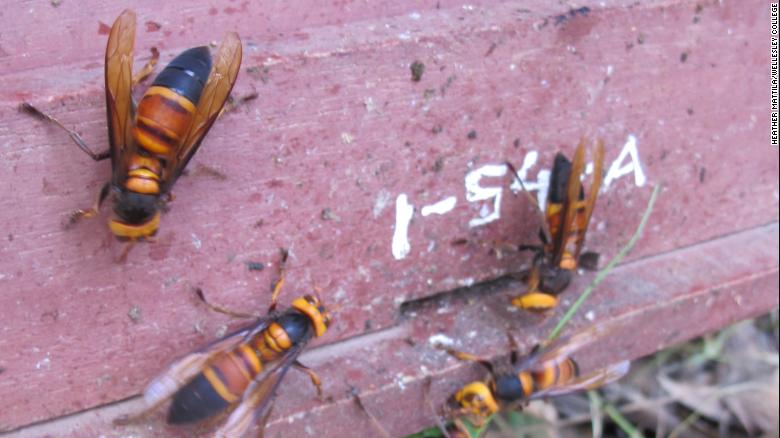Honeybees make a chilling warning noise when attacked by hive-destroying murder hornets

Sign up for CNN’s Wonder Theory science newsletter. Explore the universe with news on fascinating discoveries, scientific advancements and more.They descend en masse after a scout has identified the target hive, killing the defending adult bees, occupying their nest and harvesting the bees’ brood to feed to their own young. The marauders can decimate a hive in hours.But honeybees aren’t defenseless against the so-called murder hornets, which are native to Asia but surfaced in the United States for the first time in 2019. The bees have their own survival strategies, including a unique and frenetic warning signal that triggers defensive moves, which has now been documented by scientists for the first time. “I feel a visceral reaction when I hear them because it is clear that the bees are agitated,” said Heather Mattila, an associate professor at Wellesley College’s department of biological sciences, who was part of a team of scientists that identified the warning noise. She described the warning signal, known as an “antipredator pipe,” as harsh and noisy, with different durations and pitches similar to the shrieks, screams and panic calls used by mammals like primates and meerkats when they are afraid.”Individual pipes are of different durations, but workers string many of them together into longer signals. They change pitch a lot too, and in an irregular way, which makes them stand out.”
span {
font-style: italic;
font-weight: bolder;
}
.audio-caption {
margin-top: 16px;
margin-bottom: 16px;
padding: 0;
}
.audio-note {
font-size: .875em;
line-height: 1.1em;
margin: 16px 0 0 0;
font-style: italic;
padding: 0;
color: #8c8c8c;
}
]]>
Listen to the sound honeybees make when attacked by giant hornets
Courtesy Heather Mattila
She said the sound appeared to be used by Asian honeybees (Apis cerana) only when giant hornets attacked the colonies in Vietnam studied by the team. The research was published in the journal Royal Society Open Science on Tuesday.”Our study showed that the bees didn’t make the sound if there weren’t any hornets. It was made very infrequently in response to smaller hornets, a bit more often if the bees smelled a giant hornet (but didn’t see one), and they made them by far the most when a giant hornet was directly outside of their nest,” Mattila said via email. “We haven’t tested every predatory scenario that Asian bees might encounter, but this is good evidence that a real hornet attack is needed to trigger this response.”The signal is used to trigger some of the defensive mechanisms honeybees have in their arsenal to deploy against the murder hornets, she said. These include strategies such as dung spotting — when bees collect animal poop and apply it to the entrances of their colony to repel and confuse the hornets — and swarming to neutralize the enemy, which is known as bee balling. Balling involves hundreds of bees surrounding a hornet in seconds, squeezing it and constricting its ability to breathe. The bees raise their body temperature to a level that is lethal to the hornet, Mattila explained.Unlike their Asian counterparts, Western honeybees (Apis mellifera) haven’t evolved any strategies to fend off giant hornets. “US honey bees don’t have the historical experience of evolving defenses against giant hornets. We would not expect them to react with the sounds that Asian honey bees make, and they also don’t perform many of the other important hornet defenses used by Apis cerana,” Mattila said. “When people use our US honey bees for beekeeping in Asia, giant hornets attack them preferentially because they are so defenseless.”







